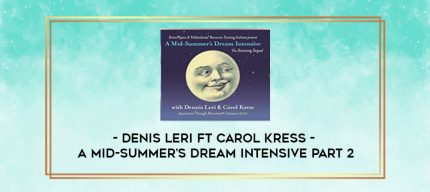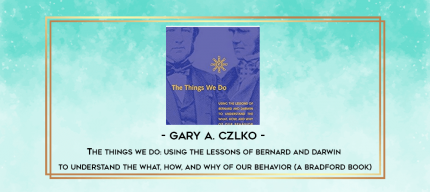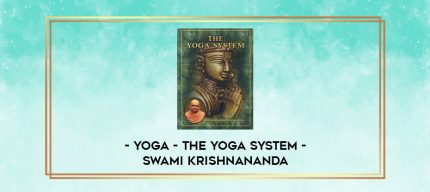Course Description
Yoga – The Yoga System – Swami Krishnananda

Yoga – The Yoga System – Swami Krishnananda
| Product Type | Ebook |
|---|---|
| Format Type | 1 ebook – PDF |
| Author | Swami Krishnananda |
| File Size | 0.42 MB |
| Pages | 63 |
ABOUT THIS EDITIONThough this eBook edition is designed primarily for digital readers and computers, it works well for print too. Page size dimensions are 5.5″ x 8.5″, or half a regular size sheet, and can be printed for personal, non-commercial use: two pages to one side of a sheet by adjusting your printer settings. 2
CONTENTSContents ……………………………………………………………………………….. 3 Preface ………………………………………………………………………………….. 4Chapter 1: Psychological Presuppositions …………………….. 5 Chapter 2: The Aim of Objective Analysis …………………….. 10Chapter 3: The Spiritual Reality …………………………………….. 13Chapter 4: Depth Psychology………………………………………….. 17Chapter 5: The Moral Restraints ……………………………………. 19 Chapter 6: The Observances …………………………………………… 30Chapter 7: Asana or Posture …………………………………………… 35Chapter 8: Pranayama or Regulation of the Vital Energy ……………………………………………………. 43Chapter 9: Pratyahara or Abstraction …………………………… 52Chapter 10: Peace of Mind and Self-Control ………………… 77Chapter 11: Dharana or Concentration ………………………… 86Chapter 12: Dhyana or Meditation ………………………………… 98Chapter 13: Samadhi or Super-Consciousness …………. 101 3
PREFACEThe present small book consists of lectures delivered by the author several years ago on the essentials of the yoga system as propounded by the Sage Patanjali. These lessons were intended particularly for students who required a special clarity of this intricate subject, and the approach has been streamlined accordingly in a form and style commensurate with the receptive capacities of the students. The section on pratyahara is especially noteworthy and students of yoga would do well to go through it again and again as a help in internal training. -THE DIVINE LIFE SOCIETY20th February, 1981 4
Chapter 1PSYCHOLOGICAL PRESUPPOSITIONSIt is necessary, at the outset, to clear certain misconceptions in regard to yoga, prevalent especially among some sections in the West. Yoga is not magic or a feat of any kind, physical or mental. Yoga is based on a sound philosophy and deep psychology. It is an educational process by which the human mind is trained to become more and more natural and weaned from the unnatural conditions of life. Yoga has particular concern with psychology, and, as a study of the -self’, it transcends both general and abnormal psychology, and leads one to the supernormal level of life. In yoga we study ourselves, while in our colleges we are told to study objects. Not the study of things but a study of the very structure of the student is required by the system of yoga, for the known is not totally independent of the knower.How do we know things at all? There is a mysterious process by which we come to know the world, and life is an activity of such knowledge. A study of the mind is a study of its relations to things. The instruction, -Know Thyself’, implies that when we know ourselves, we know all things connected with ourselves, i.e., we know the universe. In this study we have to proceed always from the lower to the higher, without making haste or working up the emotions. The first thing we are aware of in experience is the world. There are certain processes which take place in the mind, by which we come to know the existence of the world. There are sensations, perceptions and cognitions, which fall under what is known as -direct perception’ or 5
-direct knowledge’ (pratyaksha) through which the world is known, valued and judged for purpose of establishing relations. These relations constitute our social life. A stimulation of the senses takes place by a vibration that proceeds from the object outside. This happens in two ways: (1) by the very presence of the object and (2) by the light rays, sound, etc., that emanate from the object, which affect the retina of the eyes, the drums of the ears, or the other senses. We have five senses of knowledge and through them we receive all the information concerning the world. If the five senses are not to act, we cannot know if there is a world at all. We, thus, live in a sense-world. When sensory stimulation is produced by vibrations received from outside, we become active. Sensory activity stimulates the mind through the nervous system which connects the senses with the mind by means of the prana or vital energy. We may compare these nerve-channels to electric wires, through which the power of the prana flows. The pranasare not the nerves, even as electricity is not the wires. The prana is an internal vibration which links the senses with the mind. Sensations, therefore, make the mind active and the mind begins to feel that there is something outside. This may be called indeterminate perception, where the mind has a featureless awareness of the object. When the perception becomes clearer, it becomes determinate. This mental perception is usually called cognition. Beyond the mind there is another faculty, called the intellect. It judges whether a thing is good or bad, necessary or unnecessary, of this kind or that, etc. It decides upon the value of an object, whether this judgment is positive or negative, moral, aesthetic or religious. One assesses one’s 6
situation in relation to the object. Some psychologists hold that the mind is an instrument in the hands of the intellect. Manas is the Sanskrit word for mind, which is regarded as the karana or instrument, while buddhi is the Sanskrit term for intellect, which is the kartaor doer. The intellect judges what is cognized by the mind, and makes a decision as to the nature of the action that has to be taken in respect of the object in the given circumstances. The intellect is associated with another principle within, called ahamkara or ego. -Aham’ means -I’, and -kara’ is that which manifests, reveals or affirms. There is something in us, which affirms -I am’. This affirmation is ego. No logic is necessary to prove the ego, for we do not prove our own existence. This is an affirmation which requires no evidence, for all logic proceeds from it. The ego is inseparable from individual intellection, like fire from its heat. The intellect and ego exist inextricably, and human intellection is the function of the human ego. The functions of the ego are manifold, and these form the subject of psychology. There are certain ways in which the psychological instruments begin to function in relation to objects. The ego, intellect and mind perform the functions of arrogation, understanding and thinking of objects. There is also a fourth element, called chitta, which is not easily translatable into English. The term -subconscious’ is usually considered as its equivalent. That which is at the base of the conscious mind and which retains memory etc., is chitta or the subconscious mind. But the chitta in yoga psychology includes also what is known as the unconscious in psychoanalysis. All this functional apparatus, taken 7
together, is the psyche or antahkarana, the internal instrument. The internal organ functions in various forms, and yoga is interested in a thorough study of these functions, because the methods of yoga are intended to take a serious step in regard to all these psychic functions, finally. Now, how does the internal organ function? The psyche produces five reactions in respect of the world outside, some of them being positive and others negative. These are the themes of general psychology. There are five modes into which the antahkarana casts itself in performing its functions of normal life. These modes are called pramana, viparyaya, vikalpa, nidra andsmriti.Pramana or right knowledge is awareness of things as they are. This is the main subject of the studies in logic. Perception, inference and verbal testimony are the three primary ways of right knowledge. Some add comparison, presumption and non-apprehension to the usual avenues of such knowledge. How do we know that there is an object in front of us? We acquire this knowledge through direct sensory contact. This is perception. And when we see muddy water in a river, we suppose that there must have been rains uphill. This knowledge we gather by inference. The words of others in whom we have faith, also, convey to us true knowledge, as, for example, when we believe that there is an elephant in the nearby city, on hearing of it from a reliable friend, though we might not have actually seen it with our eyes. All these methods together form what goes by the name of pramana or direct proof of dependable knowledge. 8
Viparyaya is wrong perception, the mistaking of one thing for another, as, when we see a long rope in twilight, we usually take it for a snake, or apprehend that a straight stick immersed in water is bent. When we perceive anything which does not correspond to fact, the mental mode is one of erroneous understanding. Vikalpa is doubt. When we are not certain whether, for example, a thing we are seeing is a person or a pole, whether something is moving or not moving, the perception not being clear, or when we are in any dubious state of thinking, we are said to be in vikalpa.Nidra is sleep, which may be regarded as a negative condition, a withdrawal of mind from all activity. Sleep is nevertheless a psychological condition, because, though it is not positively connected with the objects of the world, it represents a latency of the impressions as well as possibilities of objective thought. Nidra is the sleep of the antahkarana.Smriti is memory, the remembrance of past events, the retention in consciousness of the impressions of experiences undergone previously. All functions of the internal organ can be brought under one or other of these processes, and subject of general psychology is an elaboration of these human ways of thinking, understanding, willing or feeling. It does not mean, however, that we entertain only five kinds of thoughts, but that all the hundreds of thoughts of the mind can be boiled down to these five groups of function. The system of yoga makes a close study of this inner structure of man and envisages it in its relation to the universe. 9
Chapter 2THE AIM OF OBJECTIVE ANALYSISAs all thoughts can be reduced to five types of internal function, all objects can be reduced to five bhutas or elements. The five great elements are called pancha-mahabhutas, and they are (1) Ether (akasa), (2) Air (vayu), (3) Fire (agni), (4) Water (apas) and (5) Earth (prithivi). The subtlety of these elements is in the ascending order of this arrangement, the succeeding one being grosser than the preceding. Also the preceding element is the cause of the succeeding, so that Ether may be regarded as containing all things in an unmanifested form. The elements constitute the whole physical cosmos. These are the real objects of the senses, and all the variety we see is made up of forms of these objects. Our sensations are the five objects. We sense through the indriyas or sense-organs. With the sense of the ear we come in contact with Ether and hear sound which is a reverberation produced by Ether. Touch is the property of Air, felt by us with the tactile sense. With the sense of the eyes we contact light which is the property of Fire. With the palate we taste things, which is the property of Water. With the nose we smell objects, and this is the property of Earth. There is the vast universe, and we know it with our senses. We live in a world of fivefold objects. The senses are incapable of knowing anything more than these elements. The internal organ, as informed and influenced by the objects, deals with them in certain manners, and this is life. While our psychological reactions constitute our personal life, the adjustment we make with others is our social life. 10
The yoga is primarily concerned with the personal life of man in relation to the universe, and not the social life, for, in the social environment, one’s real personality is rarely revealed. Yoga is essentially a study of self by self, which initially looks like an individual affair, a process of Self-investigation (atma-vichara)and Self-realization (atma-sakshatkara). But this is not the whole truth. The Self envisaged here is a consciousness of gradual integration of reality, and it finally encompasses all experience and the whole universe in its being. While the psychology of yoga comprises the functions of the internal organ, and its physics is of the five great objects or mahabhutas, the philosophy of yoga transcends both these stages of study. The yoga metaphysics holds that the body is not all, and even the five elements are not all. We do not see what is inside the body and also what is within the universe of five elements. A different set of senses would be necessary for knowing these larger secrets. Yoga finally leads us to this point. When we go deep into the body we would confront its roots; so also in the case of the objects outside. When we set out on this adventure, we begin to converge slowly at a single centre, like the two sides of a triangle that taper at one point. The so-called wide base of the world on which we move does not disclose the truth of ourselves or of objects. At this point of convergence of ourselves and of things, we need not look at objects, and here no senses are necessary, for, in this experience, there are neither selves nor things. There is only one Reality, where the universal object and the universal subject become a unitary existence. Neither is that an experience of a subject nor an object, where is revealed a 11























Reviews
There are no reviews yet.